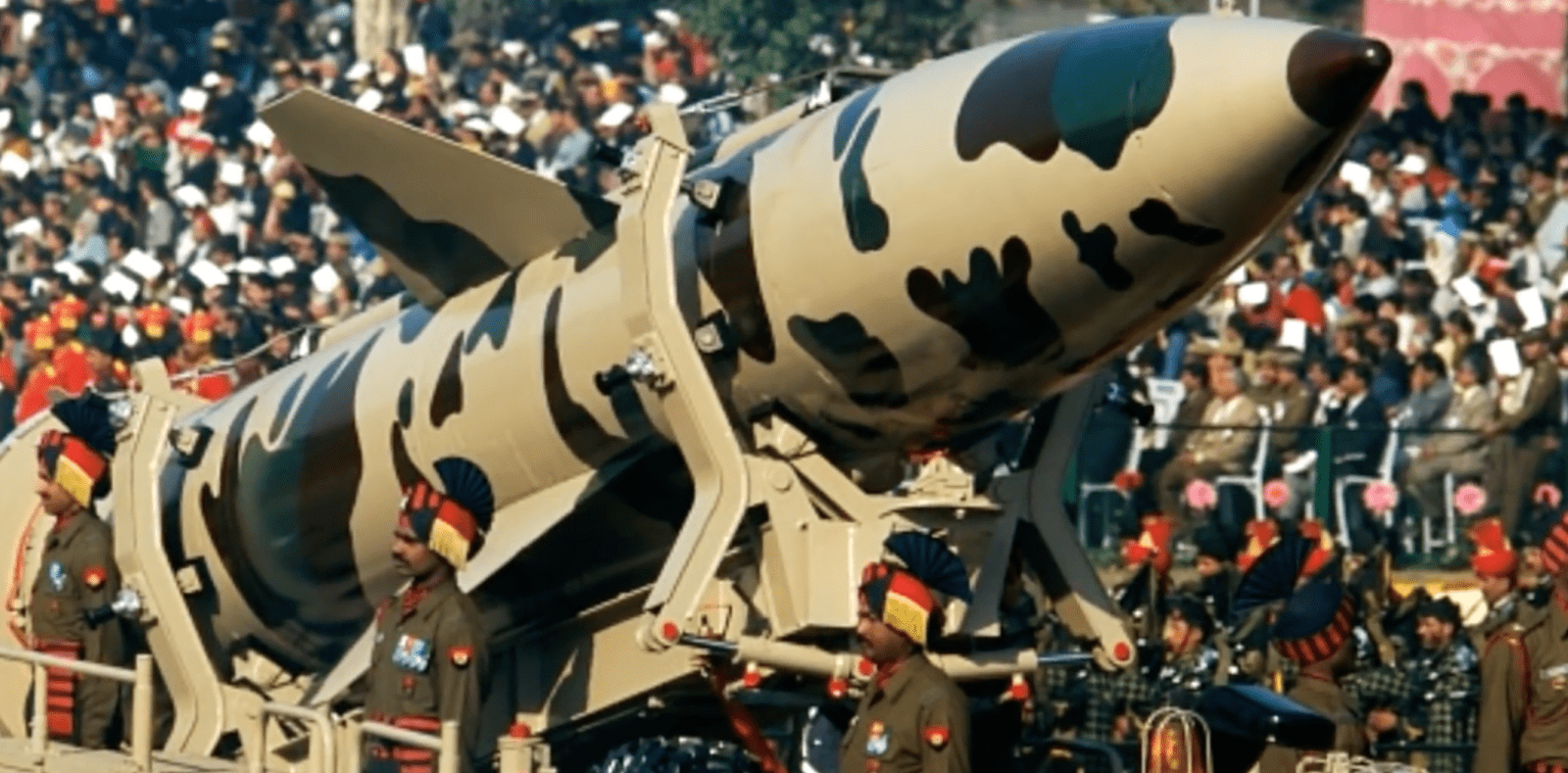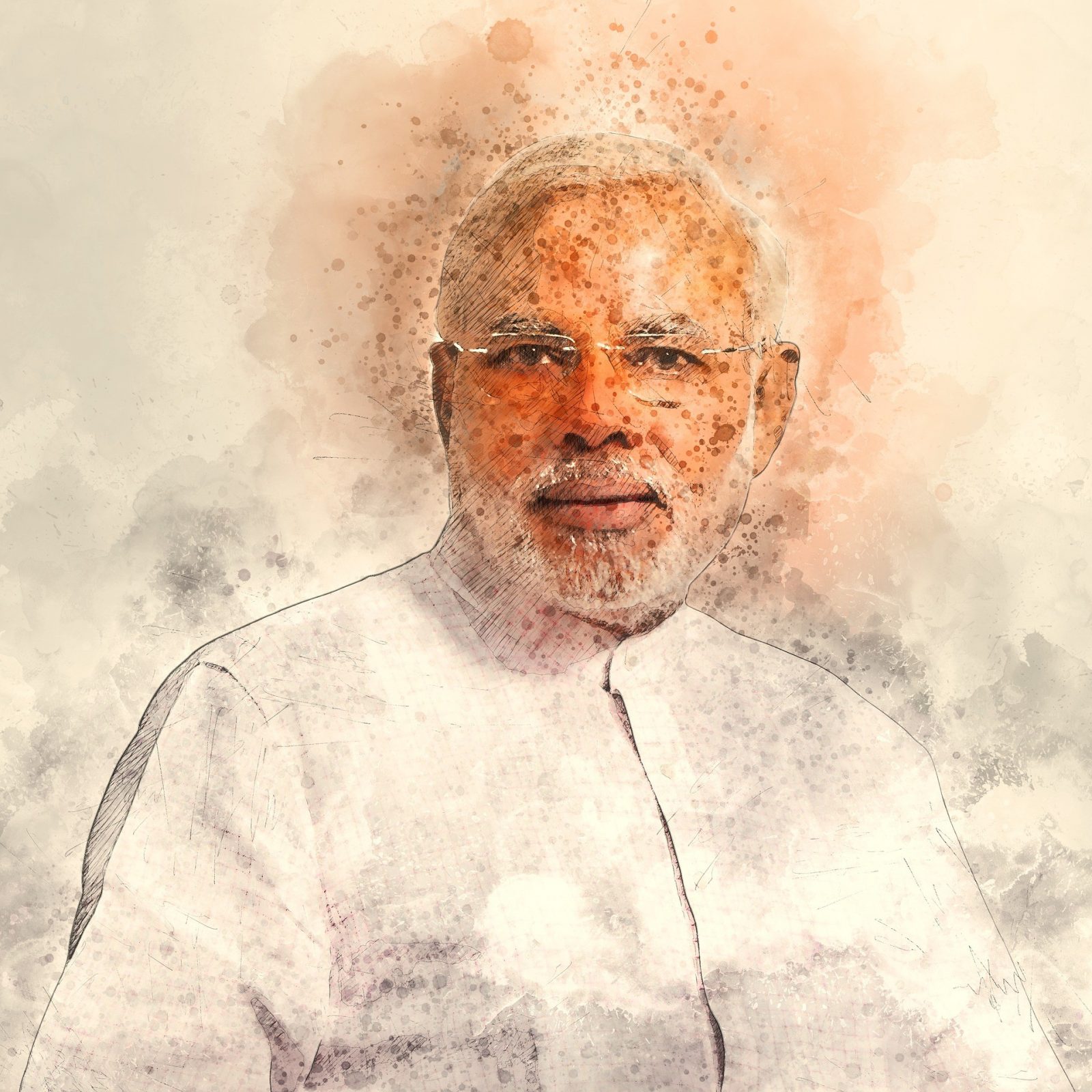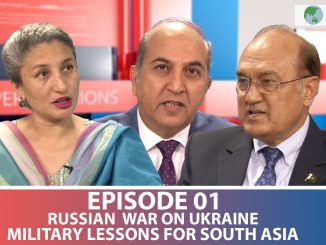 The lesson of the Cold War is that against Nuclear Weapons, only Nuclear Weapons can hold peace. (Chung Mong-Joon)
The lesson of the Cold War is that against Nuclear Weapons, only Nuclear Weapons can hold peace. (Chung Mong-Joon)
The advent of the Nuclear Age was a watershed event in the history of warfare. As proposed by Bernard Brodie, the introduction of Nuclear Weapons changed the whole concept of warfighting; the fundamental objective of military establishments changed from “war-winning” to “war avoidance”, which is essentially the illustration of the concept of deterrence. In a quest to deter war and achieve the associated political gains, nuclear weapons states adopted diverse nuclear policies in a manifestation of their designs to deter war by using nuclear weapons.
India officially maintains a policy of nuclear no first (NFU) use, but there is an ongoing debate in political, academic and military circles within India, questioning the rationale behind India’s choice of NFU. This debate once again revived in 2016 when India’s then Defence Minister, Manohar Parker, expressed his dissatisfaction with the policy. Parker argued in favour of a First Use Policy while labelling the remarks as his personal views. The debate was contributed to by Vipin Narang, a nuclear strategy expert of Indian origin based in the US. While addressing the Carnegie International Nuclear Policy Conference in 2017, Narang asserted that India might abandon its No First Use policy in favour of a “pre-emptive counterforce” strike against Pakistan, disarming the country of its whole nuclear arsenal. These comments not only drew criticism from India’s own policy & academic circles but also rang alarm bells across the border in Pakistan.
India’s Nuclear Policy: A Critical Appraisal. In 1974, India conducted a “peaceful nuclear explosion” which, according to the testimonies of India’s scientists, was not a peaceful one. In fact, it fulfilled all the requirements of a nuclear explosion whose abilities could have been used for nuclear weapons production.
From 1974 to 1998, India maintained a policy of ambiguity and utter vagueness regarding its nuclear weapons program, while diversifying and expanding its nuclear capabilities. In May 1998, India overtly declared itself a nuclear weapons state by conducting a series of nuclear explosions, a move which plunged South Asia into a perpetual nuclear arms race.
In 1999, India’s National Security Advisor Brajesh Mishra presented a Drafted Nuclear Doctrine (DND) based upon a no first use policy. This DND was amended with the addition of few caveats & modifications, and was republished in 2003. One noticeable amendment was the pledge that India will use nuclear weapons against the adversaries if “Weapons of Mass Destruction” are used against its forces anywhere in the world. The term “Weapons of Mass Destruction” possesses a broad connotation as it includes chemical & biological weapons besides nuclear arsenal. Thus, India not only further lowered its nuclear threshold but also, by hinting at the use nuclear weapons in the wake of a chemical or biological weapons attack, clearly deviated from the essence of its Nuclear Policy of No First Use. Despite the presence of these obvious ambiguities and contradictions in its policy, India’s official stance pledges a commitment to No First Use and the country continues to exercise adherence to that stance.
Motivations for India’s Nuclear No First Use Policy:
- To attain a high moral ground. India remained a strong proponent of nuclear disarmament before its own acquisition of nuclear weapons as well as after acquiring them. It blamed the acquisition at five recognized nuclear weapons states refusing to disarm. India asserted that security compulsions were the impetus for its acquisition of nuclear weapons, and cunningly announced that it was an “unwilling member” of the nuclear arms club. These justifications for the acquisition of nuclear weapons were followed by a defensive nuclear posture pledging to use nuclear weapons only in retaliation. Thus, India not only emphasized itself as a responsible nuclear state but also tried to get away from the harsh economic sanctions imposed by the International Community in the aftermath of nuclear explosions.
- China’s No First Use Policy. China’s acquisition of nuclear weapons in 1964 provided India with security reasons for nuclear weapons acquisition. India and Communist China had enjoyed good relations until 1962 when the two Asian giants locked horns in the Himalayas, which resulted in a humiliating defeat for India. Though India’s first PM, Nehru, had sanctioned the acquisition of Nuclear Weapons in the 1950s, defeat at the hands of China proved to be a catalyst for doing so. However, as China adopted a defensive nuclear posture pledging unconditional commitment to No First Use, India was not left with a solid rationalization to declare a First Use vis-à-vis China.
- Conventional superiority against Pakistan. India enjoys an overwhelming conventional superiority against its arch-nemesis Pakistan; given Pakistan’s lack of offensive designs against India, the former does not pose a grave conventional threat to the latter’s security. Thus, India does not necessarily need a First Use policy vis-à-vis Pakistan, a plan that is mostly aimed at deterring a superior conventional threat.
Will India alter its Nuclear Policy to First Use? In his “Prestige, Security and Domestic Politics” model, Scott D. Sagan considers “domestic politics” as an important factor for the acquisition of nuclear weapons by a state. In India, domestic politics played a vital role in the acquisition of nuclear weapons and, in the most recent era, India’s domestic environment has been the major factor determining the country’s outlook on the international stage.
In 2014, BJP, a hardcore nationalist party, came to power in India with a pledge to revise and update the country’s nuclear doctrine made during the election campaign. In the BJP manifesto designed for the 2014 general elections, a whole section titled “Independent Strategic Nuclear Program” was devoted to India’s nuclear program. It promised that if the BJP were elected, it would “study in detail India’s nuclear doctrine and would revise and update it to make it relevant to challenges of the current times”. In addition to that, it was also specified that the country would “maintain a credible minimum deterrent that is in tune with changing geostrategic realities.”
After coming to power, although the BJP did not take any concrete steps to fundamentally alter India’s nuclear policy, yet the defence minister’s statement stirred a debate, which further intensified after the assertion made by Vipin Narang.
Given the fact that there has not been any significant change regarding these three reasons for India’s adaptation of a No First Use policy, it is unlikely that India will change its nuclear policy in the immediate future. The country is pursuing its case vigorously to get membership of the NSG and, with the diplomatic support of the USA, it is aiming to establish itself as a responsible nuclear weapons state. In the security domain, China still exhibits a defensive nuclear posture while Pakistan remains conventionally much inferior to India. Under such circumstances, India’s adaptation of a First Use policy will just be a sign of untimely bellicosity, certain to attract the ire of the international community.
However, it is becoming ever more evident that the global security environment is in flux. The US Nuclear Posture Review published in 2018, clearly hints that the era of strategic restraint and reduction in the nuclear domain is essentially over and here on, the US strategic arsenal will undergo massive upgradation and expansion. America is all set to withdraw from the INF treaty, and with the US embarking upon the mission of nuclear expansion, effectively a nuclear arms race with its major peers, China and Russia are on the cards. This ominous scenario will fundamentally alter the benign global security landscape, adding many new dimensions to it.
Once a nuclear arms race gains momentum at a global level between the US, China and Russia, India may also jump into it, citing a security dilemma from expanding Chinese arsenal. If relations between the two Asian giants turn acrimonious due to the changing geopolitical environment, India may adopt a First Use policy to present itself as “well-postured” against threats emanating from the conventionally and strategically superior China.
India has recently concluded a deal with Russia to acquire the S-400 Missile Defense System. Though its name implies a defensive connotation, any BMD system is actually highly offensive as it tempts the possessor to preempt the nuclear arsenal of its adversary. After the delivery of S-400 is completed by 2021, it may lure India into embarking upon a nuclear adventure like the one proposed by Narang, i.e. to preempt Pakistan’s nuclear arsenal which is essentially the First Use.
Given the high accuracy of the S-400 and the wide range of area, it covers, preemption against Pakistan may seem to be a fascinating idea. However, it would be overly ambitious. And, considering the survivability of Pakistan’s nuclear arsenal and its sea-based nuclear deterrent, any such adventure can turn into a nightmare for India as it entails the risk of nuclear winter in South Asia.
Implications for Pakistan if India changes its policy to first use. Pakistan’s nuclear program is India oriented, and it has the world’s fastest-growing nuclear arsenal. Given the conventional inferiority of Pakistan against India, nuclear weapons are the ultimate resort for the former to deter a conventional attack from the latter. Pakistan has adopted a policy of nuclear first use and its nuclear threshold. But these policies & doctrines were devised, keeping in view the No First Use policy by India. If India alters its nuclear policy to First Use, Pakistan’s nuclear doctrine and armoury will have to undergo certain drastic changes to cater to the needs of changing circumstances.
If India adopts the first-use policy, Pakistan will have to increase the survivability of its nuclear arsenal by increasing their mobility or by hiding them under silos so that they may become undiscoverable to sophisticated Indian satellites. In addition to that, strengthening of the sea-leg of the nuclear triad becomes indispensable in such a scenario to survive a first disarming attack and retaliate punitively.
To respond to India’s first strike, Pakistan may have to adopt a policy of massive retaliation to acquaint the adversary with the consequences of any such misadventure. Massive retaliation requires an excessive number of survivable warheads and sophisticated delivery means. As a result, a massive expansion of Pakistan’s nuclear arsenal and delivery means will be required, which may prove to be difficult considering the economic compulsions and non-recognized nuclear status of Pakistan.
To prevent Indian missiles from reaching targets inside Pakistan, deploying an advanced missile defence system is a feasible strategy. Although even the most advanced missile defence systems has some vulnerabilities, yet its potential to destroy the adversary’s missiles approaching a sensitive location cannot be overlooked. Recently, India concluded a deal of $5 billion with Russia to buy the Su-400, which is the most advanced version of missile defence systems and is highly sophisticated. Currently, Pakistan’s economic condition does not allow the country to buy such an expensive weapon; but if India alters to first use policy, Pakistan may have to allocate the required sum of resources to acquire an air defence system that counters the threat originating from India.
To sum up, the evolving global environment leaves its mark on South Asia; and once an arms race ensues in the region due to the shifting global security landscape, it disturbs strategic stability at the regional level. South Asia is appropriately described as the “Nuclear Volcano”, and any disturbance in regional strategic stability leading to a misadventure can result in annihilating consequences, not only for the region but also for the whole world.
![]()




Superbly written.